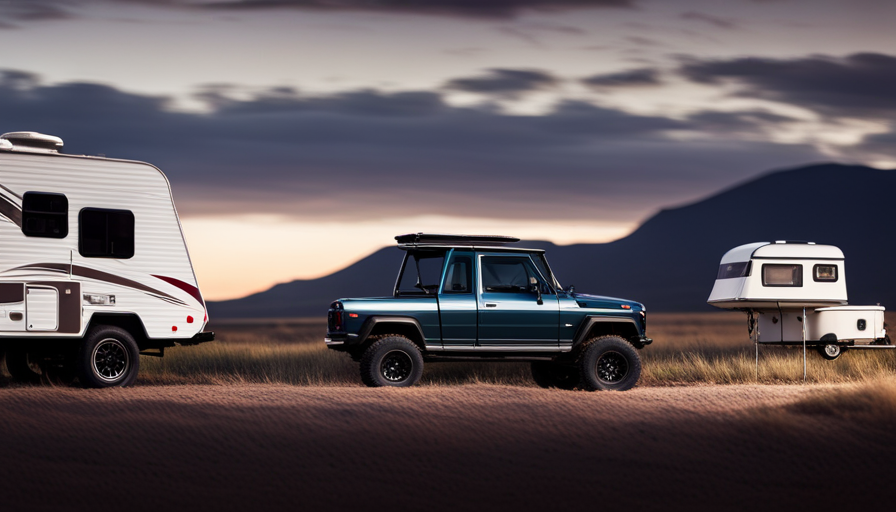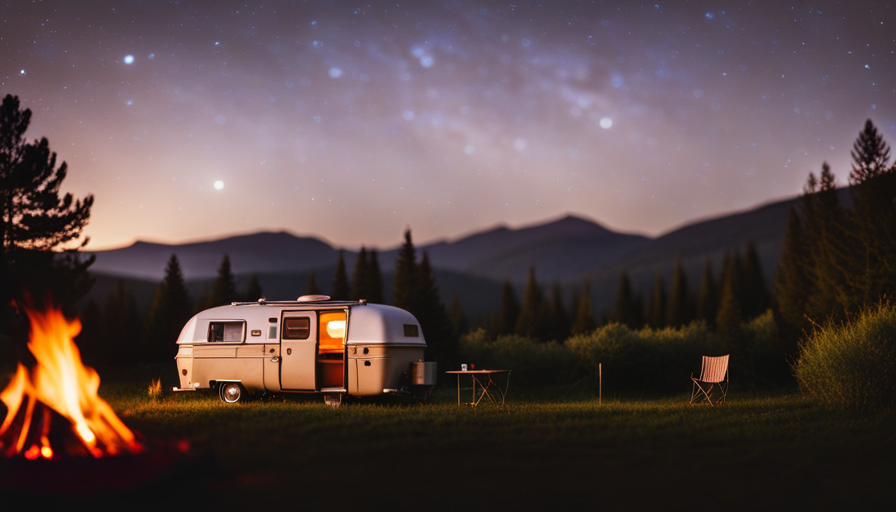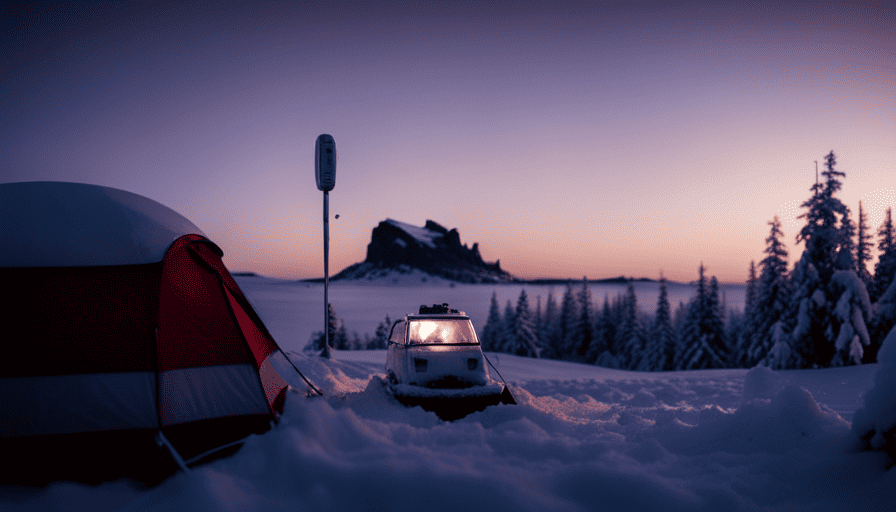Enter the realm of Camper footwear, where artisanship intertwines with innovation, and fashion merges flawlessly with comfort.
Like a carefully woven tapestry, each pair of Camper shoes tells a story of dedication, passion, and unwavering commitment to excellence.
From the bustling factories in Spain to the tranquil workshops in Portugal, the journey of a Camper shoe begins in the hands of skilled artisans who bring them to life.
With a global presence, Camper shoes are made in factories scattered across the world, each one meticulously selected for its expertise and adherence to ethical manufacturing practices. These factories serve as the beating heart of Camper, where cutting-edge technologies and traditional techniques merge to create footwear that is both timeless and modern.
In this article, we will delve into the captivating history of Camper shoes, explore the materials used in their creation, uncover the remarkable collaborations that have shaped the brand, and discover the profound impact Camper has on local communities.
Join us as we embark on a journey to unravel the secrets behind the making of Camper shoes and uncover the destinations where authentic Camper shoes can be found.
Key Takeaways
- Camper shoes are made in factories around the world, including Spain, Portugal, Vietnam, and China.
- The factories are selected for their expertise and ethical practices, ensuring high-quality production.
- Camper supports fair labor practices, responsible sourcing, human rights, and environmental sustainability.
- The shoes are meticulously crafted by skilled artisans using a combination of traditional techniques and modern technologies.
The History of Camper Shoes
Let me take you on a journey through the captivating history of Camper Shoes, where you’ll discover the remarkable origins and evolution of these iconic footwear creations.
Camper Shoes, a Spanish brand, has a rich history of innovation and craftsmanship that spans over four decades. It all began in 1975 when Lorenzo Fluxà Rosselló, a visionary entrepreneur, founded the company in Inca, a small town on the island of Mallorca. From the very beginning, Camper Shoes set out to revolutionize the footwear industry by combining traditional craftsmanship with contemporary design.
Throughout its history, Camper Shoes has been at the forefront of innovation, continuously pushing boundaries and challenging conventions. The brand has pioneered new materials, manufacturing techniques, and design concepts to create shoes that are not only stylish but also comfortable and functional.
From their iconic Pelotas line, with its unique sole construction inspired by the softness of a soccer ball, to their collaboration with renowned designers like Jaime Hayon and Nendo, Camper Shoes has consistently pushed the boundaries of what is possible in footwear design.
As we delve deeper into the craftsmanship behind Camper Shoes, we will explore the meticulous attention to detail and the dedication to quality that define their creations.
Without further ado, let’s uncover the secrets behind the artistry and skill that make Camper Shoes so exceptional.
The Craftsmanship Behind Camper Shoes
Renowned for their exceptional artistry, the origins of the meticulously crafted footwear from Camper remain a captivating tale. The brand’s commitment to quality craftsmanship techniques and innovative shoe construction methods has set them apart in the industry.
Every pair of Camper shoes is meticulously crafted by skilled artisans who bring decades of experience to their work. The craftsmanship techniques used by Camper are rooted in tradition, with a focus on attention to detail and precision. From the selection of the finest materials to the intricate stitching and assembly, each step of the process is carefully executed. The brand also embraces modern technologies and techniques to enhance the quality and durability of their shoes.
Shoe construction methods at Camper are a blend of traditional handcrafting and modern machinery. Skilled artisans work alongside state-of-the-art equipment to ensure the perfect balance of craftsmanship and precision. This combination allows for the creation of unique and comfortable footwear that is both stylish and functional.
Transitioning into the subsequent section about Camper shoe factories around the world, it is fascinating to see how these traditional craftsmanship techniques are implemented on a global scale. Camper has established factories in various countries, each adhering to the brand’s high standards of quality and craftsmanship.
Camper Shoe Factories Around the World
Camper’s global presence extends to its factories spread across different countries, where skilled artisans from diverse backgrounds bring their expertise to the art of shoemaking. The brand has various manufacturing locations worldwide, ensuring that their shoes are made with the utmost care and attention to detail.
One of Camper’s main manufacturing hubs is in the Spanish region of Mallorca, where the brand was founded. Here, traditional craftsmanship meets modern techniques, resulting in high-quality shoes that are both stylish and comfortable. Additionally, Camper has factories in Portugal, where they benefit from the country’s long-standing reputation for producing fine footwear. These factories employ highly skilled workers who meticulously craft each pair of shoes.
In addition to Spain and Portugal, Camper also has manufacturing facilities in other countries around the world, including Vietnam and China. These factories allow the brand to meet the high demand for their products while maintaining their commitment to quality craftsmanship.
The importance of ethical manufacturing is paramount to Camper. In the next section, we’ll delve into how the brand ensures that their manufacturing processes align with their values, from sourcing materials responsibly to promoting fair labor practices.
The Importance of Ethical Manufacturing
Immerse yourself in the world of ethical manufacturing, where every stitch and thread is carefully woven together to create a tapestry of integrity and social responsibility.
In today’s global marketplace, the importance of ethical sourcing and fair trade cannot be overstated. Here are four reasons why ethical manufacturing is crucial:
-
Human Rights: Ethical manufacturing ensures that workers are treated with dignity and respect. It guarantees fair wages, safe working conditions, and prohibits child labor. By supporting ethical manufacturing, we’re standing up for the rights and well-being of workers around the world.
-
Environmental Sustainability: Ethical manufacturing prioritizes sustainable practices, reducing waste and minimizing the carbon footprint. It promotes the use of eco-friendly materials and processes, protecting our planet for future generations.
-
Consumer Confidence: Ethical manufacturing provides transparency, allowing consumers to make informed choices. When we know that the products we purchase are made ethically, we can have confidence in our purchasing decisions and support companies that align with our values.
-
Positive Impact: By choosing ethical manufacturing, we contribute to the development of local communities and economies. Fair trade practices enable artisans and workers to thrive, breaking the cycle of poverty and creating opportunities for growth.
Transitioning into the subsequent section about the materials used in camper shoes, we can now explore the careful selection of materials that goes into creating each pair.
The Materials Used in Camper Shoes
Step into the world of Camper and discover the carefully chosen materials that make each pair of shoes a unique and comfortable experience for you.
At Camper, sustainable practices are at the forefront of our manufacturing process. We believe in using materials that are not only high-quality but also environmentally friendly. One such material is leather, which is sourced from tanneries that adhere to strict environmental standards. This ensures that the leather used in our shoes is both durable and sustainable.
In addition to leather, we also incorporate other innovative materials into our shoe design. For example, we use recycled rubber for the outsoles of our shoes, reducing waste and promoting a circular economy. This not only contributes to the sustainability of our products but also enhances their durability. We want our shoes to last, providing you with comfort and style for years to come.
Comfort is a key aspect of Camper shoes, and our choice of materials reflects that. We carefully select materials that are soft, flexible, and breathable, ensuring that your feet stay comfortable even after hours of wear. Whether it’s the lining, the insole, or the upper, every material used in our shoes is chosen with your comfort in mind.
As we move forward into the next section about the role of design in Camper shoes, it is important to note that the materials we use play a crucial role in shaping the overall design aesthetic. Each material is chosen with intention, creating a harmonious balance between style, sustainability, durability, and comfort.
The Role of Design in Camper Shoes
Get ready to discover how design plays a pivotal role in creating the unique and captivating experience of each pair of Camper shoes. The impact of design on customer satisfaction can’t be overstated.
Camper recognizes that a well-designed shoe not only looks good but also ensures comfort and functionality. Through meticulous research and attention to detail, Camper’s design team creates shoes that meet the needs and desires of their diverse customer base.
Design at Camper isn’t only influenced by fashion trends but also by cultural trends. The design team closely follows the ever-changing dynamics of our society, incorporating elements that resonate with different cultures and lifestyles. This ensures that Camper shoes aren’t just fashionable but also relevant and meaningful to the customers who wear them.
The influence of cultural trends on Camper shoe design is evident in the diverse range of styles and materials used. From classic leather designs to innovative and sustainable materials, Camper strives to cater to the varied tastes and preferences of their customers. By embracing cultural influences, Camper creates shoes that aren’t only visually appealing but also reflect the values and aspirations of the people who wear them.
As we delve into the section about collaborations and limited edition collections, we’ll explore how Camper leverages design partnerships to offer unique and exclusive footwear options.
Collaborations and Limited Edition Collections
In our previous discussion about the role of design in Camper shoes, we explored how their unique design philosophy sets them apart in the footwear industry. Now, let’s delve into another aspect that makes Camper shoes even more intriguing – their collaborations and limited edition collections.
Camper is known for its sustainable collaborations with renowned designers and artists. By partnering with creative minds from different backgrounds, they bring fresh perspectives and innovative ideas to their footwear. These collaborations often result in limited edition releases that are highly sought after by shoe enthusiasts and collectors alike.
One notable collaboration was with the Japanese fashion brand Kiko Kostadinov. Together, they created a collection that merged Camper’s timeless design with Kostadinov’s avant-garde aesthetic, resulting in a truly unique and fashion-forward line of shoes. Another noteworthy collaboration was with the contemporary artist Bernhard Willhelm, where they transformed traditional shoe designs into wearable art pieces.
These limited edition releases not only showcase Camper’s commitment to pushing boundaries and embracing creativity but also contribute to their brand’s exclusivity. The anticipation and excitement surrounding each collaboration and release make them highly coveted by fashion-forward individuals around the world.
Moving forward, let’s explore the global reach of Camper shoes and how they have become a staple in footwear fashion worldwide.
The Global Reach of Camper Shoes
With their unique designs and collaborations, it’s no wonder Camper shoes have become a worldwide fashion phenomenon – but how exactly have they achieved such global reach?
Camper shoes have managed to expand their presence across the globe by strategically establishing retail locations in key fashion capitals, such as New York, London, Paris, Tokyo, and Milan. This global expansion has allowed the brand to tap into diverse markets and cater to a wide range of fashion-conscious consumers.
-
Collaborations with renowned designers: Camper has collaborated with esteemed designers like Bernhard Willhelm and Kiko Kostadinov, attracting global attention and expanding their customer base.
-
Limited edition collections: By releasing limited edition collections, Camper creates a sense of exclusivity and excitement, driving demand from fashion enthusiasts worldwide.
-
Embracing cultural influences: Camper shoes have successfully incorporated cultural influences from different regions, such as the vibrant colors of Spanish culture or the minimalist aesthetic of Scandinavian design. This approach resonates with consumers across the globe, making Camper a truly international brand.
-
Innovative marketing strategies: Camper has leveraged digital platforms and social media to connect with consumers worldwide, showcasing their products and engaging with their audience in a meaningful way.
-
Collaborative partnerships with local artisans: By partnering with local artisans and craftsmen in various countries, Camper not only supports local communities but also infuses their designs with authentic cultural elements.
Transitioning into the next section, ‘how Camper shoes support local communities,’ it is evident that the brand’s global expansion has not only brought them success but also allowed them to make a positive impact on the communities they operate in.
How Camper Shoes Support Local Communities
In our previous subtopic, we explored the global reach of Camper Shoes, discovering their presence in various countries around the world. Now, let’s delve into how Camper Shoes goes above and beyond by supporting local communities.
Camper Shoes understands the importance of social impact and fair trade in today’s world. They believe that a company should not only create quality products but also contribute positively to society. That’s why they actively engage with local communities in the areas where their shoes are made. They prioritize fair wages and safe working conditions for their employees, ensuring that their manufacturing processes align with ethical standards.
Furthermore, Camper Shoes is committed to supporting local artisans and craftsmen. By collaborating with these individuals, they not only preserve traditional techniques and skills but also provide them with sustainable livelihoods. This approach not only benefits the communities involved but also adds a unique touch to their shoe designs, making them truly one-of-a-kind.
As we transition to the next section, which explores where to find authentic Camper Shoes, it is evident that Camper Shoes’ commitment to social impact and fair trade extends beyond their manufacturing processes. They strive to make a positive difference in the communities they operate in, creating a brand that not only offers stylish footwear but also embodies values that resonate with conscientious consumers.
Where to Find Authentic Camper Shoes
Discover the best places to find genuine Camper Shoes, ensuring you get your hands on their unique and ethical footwear.
Camper Shoes are known for their distinctive designs and commitment to ethical production. When searching for authentic Camper Shoes, there are a few popular styles to keep an eye out for. The Pelotas and Twins collections are among the most sought-after, featuring bold colors and innovative designs that reflect the brand’s modern aesthetic. Another popular style is the Peu collection, known for its minimalist yet stylish look.
To ensure you’re purchasing genuine Camper Shoes, it’s important to be aware of the tips for identifying fake ones. First, pay attention to the quality of materials used. Genuine Camper Shoes are made with high-quality leather and other durable materials. Inspect the stitching carefully, as authentic Camper Shoes have precise and even stitching. Additionally, check for the Camper logo, which should be spelled correctly and neatly embossed or printed. Lastly, purchase from authorized retailers or directly from the Camper website to guarantee authenticity.
By following these tips and knowing the popular styles of authentic Camper Shoes, you can confidently find and purchase genuine footwear that not only looks great but also supports ethical production practices.
Frequently Asked Questions
What is the price range of Camper shoes?
When it comes to the price range of Camper shoes, there is a wide variety to choose from. Prices can range anywhere from $100 to $300, depending on the style and materials used.
Camper offers a range of popular styles, such as their iconic Twins collection and their comfortable Peu line.
It’s important to note that the price comparison may vary depending on the retailer and any ongoing promotions.
Are Camper shoes suitable for people with wide feet?
When it comes to foot health considerations for individuals with wide feet, choosing the right shoes is of utmost importance. While camper shoes may not be the ideal choice for those with wider feet, there are alternatives available.
It is crucial to look for shoes with a wider toe box and ample arch support. Brands like New Balance, Skechers, and Brooks offer a range of options specifically designed for wider feet.
Remember, finding the perfect fit is key to happy feet!
Can I customize the design of my Camper shoes?
Yes, you can customize the design of your Camper shoes. Camper offers a variety of customization options, allowing you to personalize your shoes to your liking. The process involves selecting your preferred materials, colors, and details from their range of available options. However, it’s important to note that due to the personalized nature of these shoes, Camper generally doesn’t allow returns or exchanges for customized products.
Do Camper shoes offer any warranty or guarantee?
Absolutely! Camper shoes come with a fantastic warranty and guarantee.
The warranty duration for Camper shoes typically varies, depending on the specific model and any regional regulations. However, in general, the warranty lasts for a reasonable amount of time to ensure your satisfaction.
As for the guarantee, it covers a wide range of issues, including manufacturing defects and material failures. Rest assured, Camper stands behind the quality of their products and aims to provide you with a worry-free experience.
Are Camper shoes available for children or only for adults?
Camper offers sizing options for children’s shoes, making them suitable for both kids and adults. They have a range of popular styles for kids, including sneakers, sandals, and boots. These shoes are designed with the same attention to detail and quality as their adult counterparts, ensuring comfort and durability.
Camper understands the importance of providing stylish and well-fitting footwear for children, making them a great choice for families.
Is it Difficult to Open an Awning on a Camper?
Opening an awning on a camper can be a challenging task. It requires careful understanding of the mechanism, locating the right spots for attachment, and properly aligning the poles. However, with some practice and patience, mastering the process of opening an awning on a camper can become easier and more efficient.
Conclusion
In conclusion, Camper shoes have a rich history and are crafted with meticulous attention to detail in factories around the world. The brand’s commitment to ethical manufacturing ensures that every pair of shoes is made responsibly.
Using high-quality materials and collaborating with renowned designers, Camper creates limited edition collections that captivate shoe enthusiasts globally. Moreover, Camper’s support for local communities further enhances their appeal.
So, whether you’re searching for a classic or unique pair of shoes, you can trust that Camper will deliver both style and substance.











